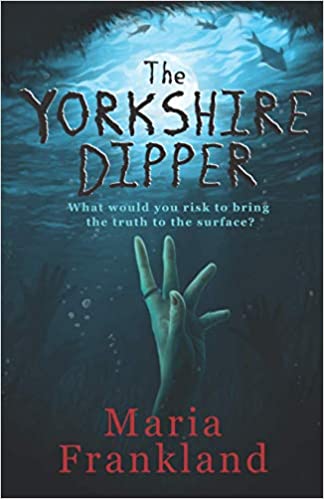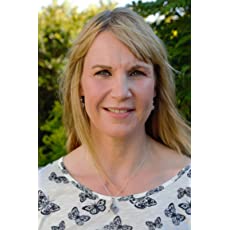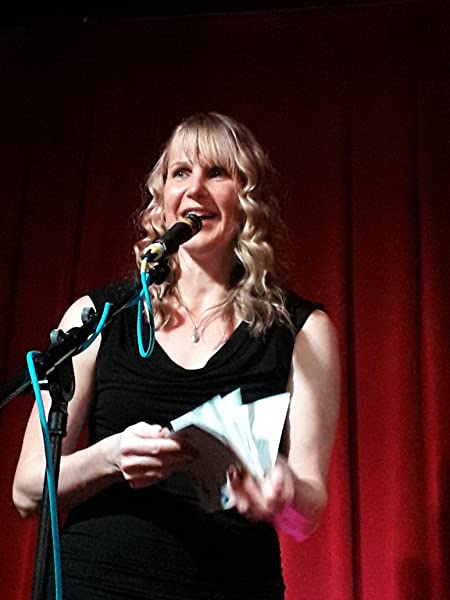By Amy Boyle
“All decisions are mine”
Maria Frankland
The idea of self-publishing your work can seem daunting. I’m in the middle of my Publishing MA at YSJ and have learned a great deal about the publishing cycle in a short period of time. It is an intricate process that requires a lot of commitment and hard work, and the self-publisher must devote themselves to every aspect of this process. I hope that this article will shine a brief, but bright light, on an aspect of publishing that many know little about.
It’s relatively easy to overlook how much work goes into publishing a book. We follow our favourite authors and beg for new releases, but we rarely consider the amount of time and effort that it takes to not only publish a book, but to publish it well – to edit the text to a high standard, to come up with a design that is both eye catching and relevant to the content, to market it for its intended audience, to stock and distribute it, and to ultimately make you (the reader) want to buy and read it. Publishing a book is a long process.
Since learning more about the industry, I was amazed at the tenacity of smaller independent publishers, operating in teams of sometimes as small as 2-3 people. Yes – 2-3 people to manage the entire process outlined above. However, what fascinated me most was the self-publishing industry – the authors who, sometimes, with little to no knowledge of the industry, manage to publish their books and make them a success.
I had the pleasure of conducting an interview via email with Maria Frankland, a self-published author, whose best selling book has now sold over six thousand copies. Through talking with her, I was keen to better understand the self-publishing industry and whether or not it was a viable route for aspiring authors wanting to or struggling to get published.
It is easy, when considering self-publishing, to become overwhelmed by cons that sometimes outweigh the pros. That might just be my Publishing MA talking, but now having a more in-depth knowledge of the industry, and all of the processes it entails, I find it hard to comprehend the idea of trying to self-publish my own work. In a traditional conglomerate publishing house, like Penguin, there are departments for each section of the publishing cycle. This means that there is a team of people for every stage of the process investing time and energy into the project. Scale that down to a small independent publisher like Valley Press, and you’re already talking about a decrease from as many as 2,000 employees to under 10.
However, as a self-publisher, you’re a team of one. Now, don’t get me wrong, you might have a whole host of family and friends willing to help with proof-reading, but ultimately, you’re on your own, with no help from people directly involved in and with a vast knowledge of the industry. Not to mention that there’s no advance payments, no budget (except your own), no brand establishment and thus brand loyalty, and ultimately no support from industry experts (in most cases). However, when I asked Maria if she had faced any problems or difficulties with relation to her self-publishing experience, her answer was simply; ‘No’.
Maria has published four psychological thrillers to date: The Last Cuckoo, The Man Behind Closed Doors, Left Hanging and The Yorkshire Dipper. As well as this, she has published a memoir entitled Don’t Call Me Mum, four ‘how-to’ books for writers: Write a Novel in a Year, Write a Collection of Poetry in a Year, Write a Collection of Short Stories and Write your Life Story (all available with companion workbooks), and a collection of poetry entitled Poetry for the Newly Married 40 Something. She currently has a further ‘three psychological thrillers at various stages of editing, due for release in May, August and November of this year’.

As a seasoned self-published writer, I was curious to know why she had chosen to self-publish her work rather than go through a traditional publishing house. Her answer resonated somewhat; ‘I submitted a novel (The Man Behind Closed Doors) to 46 agents and publishers and could have papered my walls with rejections – though I had a couple of near misses, including a shortlist for a national debut novelist competition.’ I think that many want-to-be authors can appreciate this feeling. When I was in high school, I had a friend who had written an entire novel on Word – something crazy like 800 pages – which she printed out and sent to as many publishers as she could. She was rejected by all, and although I can appreciate why that was now, I can still vividly remember how defeated she was and how disbelieving in her own capabilities as a writer. For Maria though, other self-published authors paved the way for her own venture into a less traditional mode of publishing. Maria says that ‘It was when I came across self publishing gurus like Joanna Penn (The Creative Penn) and Mark Dawson (Self Publishing Formula) that I learned there was a solid plan B available.’ I like this term ‘plan B’ here, as she reminds us that there is always another option.
One of the main fears, I think, that comes with the thought of self-publishing is money – how to make a profit without the financial backing of a publishing house and advance payments. Maria swears by Kindle Unlimited on Amazon for the sale of her books, ‘where [she] get[s] a 70% royalty and [she] get[s] paid for page reads too’. Amazon is Maria’s only retail outlet for her work, and I think a big appeal to this is both the aid of having third-party involvement to sell your work, and the benefit of Amazon as an established online market. All of Maria’s books are available in kindle editions as well as paperback, and the availability of multiple formats through Amazon allows readers to choose to read her work in any format they would like. In fact the growth of eBooks and audiobooks in recent years has undoubtedly led to an increase in reader interest, as people have specific reading preferences that can now be accommodated. In this way, there is lots of scope for self-published authors to even simply begin by publishing their work as eBooks or kindle editions, which involves less initial upfront cost, as it excludes the cost of printers and distributors.
In the contemporary world, social media plays a significant role in every aspect of our lives and our interactions with the world around us. The digitisation of the publishing industry is a good example of this, as publishers have and are now adapting to a world in which effective management of social media is essential. I was interested to know Maria’s take on this. There is a lot to be said for self-published authors and the time that they must devote to their projects. As aforementioned, in a traditional publishing house, there may be an entire team just to manage social media accounts. Not only this, but authors also have the benefit of the publisher’s established brand – social media accounts with lots of loyal followers. For first-time self-published authors however, this means starting from scratch and devoting the time to develop your own personal brand.
Maria agreed that the use of social media is ‘Absolutely essential’. She continued; ‘I have a strong presence on Facebook and a small one on Twitter. Facebook helps me keep current readers informed and I use Facebook advertising to bring in new readers. I also use Amazon ads which is very complicated to learn and I’m still trying to get to grips with it!’ I thought it was interesting that Maria mainly uses Facebook, as it seems to be the hardest of the main social media apps in which to develop a following, but this is evidently testament to her hard work and commitment. Social media plays an invaluable role in the publishing process as it is the main mode through which, as Maria asserts, to keep readers informed, to entice new readers, and to generally market books and establish a sense of brand loyalty. I think, therefore, there is a lot of respect to be given to self-published authors, like Maria, who manage their social media accounts, and do so effectively. I also really liked her honesty here. Self-publishing is definitely a learning process, but it appears that the rewards are plentiful.
Talking to Maria was hugely informative and has inspired me to consider self-publishing my own work, if I ever get round to actually finishing anything! The volume of works she has published is testament to her belief in self-publishing as a viable option for writers and proof that it is a rewarding experience should you be willing to take the chance.
But how do you measure the success of your work when you are self-published? It’s an important question to ask, as ultimately we want to publish our work and have it be successful. But how does one measure success? Maria looks specifically to her readers and audience, measuring her success through ‘Book sales, reviews on Amazon, comments on [her] ads, emails from readers and readers who opt to join [her] ‘keep in touch’ list or [her] advance reader team.’ What this suggested to me was that for Maria, success comes in the form of feedback and reader satisfaction. This is interesting and very important, as although the publishing process ends with the reader buying the book, it is ultimately a cycle. The last stage of the cycle has to ensure that the reader is satisfied and wants to read more in order for the cycle to start again. By monitoring reader feedback, therefore, an author can measure the success of their work by positive reader experiences, which benefits the author further by encouraging repeat custom. This is something that can easily be done by a self-published author and that may in fact benefit the author further. Developing a connection between author and reader is arguably more personal than communicating through and gaining feedback from a publisher who acts as a third party in this relationship.
The questions on all of our minds though; what is it specifically about self-publishing that makes it worthwhile and what about it improves the entire publishing experience? For Maria, the answer is straightforward; ‘Having complete autonomy. All decisions are mine. No publisher can tell me to change my manuscript or choose the cover. I have full control over my publishing schedule, my marketing and most importantly – the profits.’ This is undoubtedly the biggest advantage of self-publishing. In a traditional publishing house, there is an element of freedom that is taken away. Although, ultimately the author must approve all decisions in the process, there are some things beyond their control. For example, most publishers have ‘house styles’ meaning that certain elements of the writing must be articulated in particular ways, and some publishers have specific and consistent designs across their books, thus minimising author involvement in the design process. As such, your ultimate vision for your work may not be achieved in a larger publishing house. Whilst smaller independent publishers may be less restrictive, there will still ultimately be a team of people that hold a stake in the decision-making process.
With the development of hybrid publishers such as Lendal Press, some of these issues are beginning to be erased, as hybrid publishers act as advocates for the author – placing their vision at the forefront. However, I think that there is something to be said for authors who take on the entire process of publishing their work alone. Not only does it allow full control over a project, it allows the author to develop a deeper and more meaningful relationship with their work, seeing it through from idea to finished published product.
For my final question to Maria, I queried whether there was anything she wished she had known before she decided to self-publish her work, and she responded; ‘Not so much things I wish I’d known – more things I didn’t know that I had to learn. I had a masters in creative writing, so had plenty of grounding in the craft, but the formatting, editing, publishing and marketing have been a huge learning curve and I’ve had to take lots of courses. Since the first lockdown I’ve worked all day, every day, and have never worked on something as hard in my life. But I am now earning enough to live on, and the profit is growing each month. ’ If you’re considering self-publishing your work, I think it’s important to consider people like Maria, who studied creative writing and had the courage and determination to choose a less traditional route and had it pay off. It is by no means an easy process, but the rewards will be plentiful.
Having hopefully enlightened you to the self-publishing industry, I will leave you with some advice from Maria herself with regards to writers who are considering self-publishing their work:
- ‘Get a mailing list – I use Mailchimp – have some readers queuing up before your first release.
- Have a website – I use WordPress – this is my central hub online and I give away a free novella here to bring new readers into my mailing list.
- Keep writing – don’t let the business side of being a self-employed author take you from your writing.
- There’s so much advice (paid and free) on the web. Learn as much as you can about all the options and strategies.
- Treat it like a business. Be organised, keep records, have plans.
- Consider having other sources of income, I offer creative writing courses online but some writers coach or offer editing or proof-reading services.’
If you found this interview useful, then check out our Publishing and Opportunities page for more insights, submission calls, and more!



